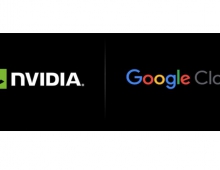
Lossless and Transparency Encoding in WebP
Google's software engineers have introduced a new mode in WebP to compress images losslessly, and support for transparency - also known as alpha channel - in both the lossless and lossy modes.
In September 2010 Google announced the WebP image format with lossy compression. WebP was proposed as an alternative to JPEG, with 25-34% better compression compared to JPEG images at equivalent SSIM index. Last month the company announced WebP support for animation, ICC profile, XMP metadata and tiling.
With today's new modes, you can now use WebP to better compress all types of images on the web. Photographic images typically encoded as JPEG can be encoded in WebP lossy mode to achieve smaller file size. Icons and graphics can be encoded better in WebP lossless mode than in PNG. WebP lossy with alpha can be used to create transparent images that have minimal visual degradation, yet are much smaller in file size. Animations compressed as GIFs can use animation support in WebP.
According to Google, on average, you get a 45% reduction in size when starting with PNGs found on the web, and a 28% reduction in size compared to PNGs that are re-compressed with pngcrush and pngout. Smaller images on the page mean faster page loads.
Today, webmasters who need transparency must encode images losslessly in PNG, leading to a significant size bloat. WebP alpha encodes images with low bits-per-pixel and provides an effective way to reduce the size of such images. Lossless compression of the alpha channel adds just 22% bytes over lossy (quality 90) WebP encoding. Smaller alpha overhead means richer images on webpages.
You can find a more detailed compression study for these modes here.
With today's new modes, you can now use WebP to better compress all types of images on the web. Photographic images typically encoded as JPEG can be encoded in WebP lossy mode to achieve smaller file size. Icons and graphics can be encoded better in WebP lossless mode than in PNG. WebP lossy with alpha can be used to create transparent images that have minimal visual degradation, yet are much smaller in file size. Animations compressed as GIFs can use animation support in WebP.
According to Google, on average, you get a 45% reduction in size when starting with PNGs found on the web, and a 28% reduction in size compared to PNGs that are re-compressed with pngcrush and pngout. Smaller images on the page mean faster page loads.
Today, webmasters who need transparency must encode images losslessly in PNG, leading to a significant size bloat. WebP alpha encodes images with low bits-per-pixel and provides an effective way to reduce the size of such images. Lossless compression of the alpha channel adds just 22% bytes over lossy (quality 90) WebP encoding. Smaller alpha overhead means richer images on webpages.
You can find a more detailed compression study for these modes here.




















